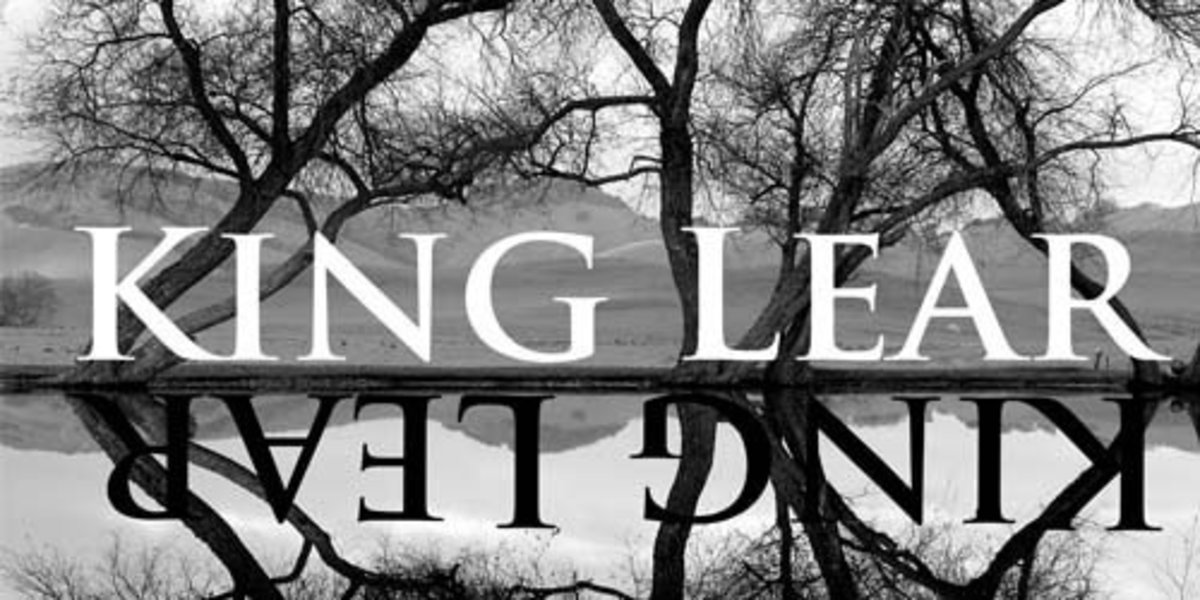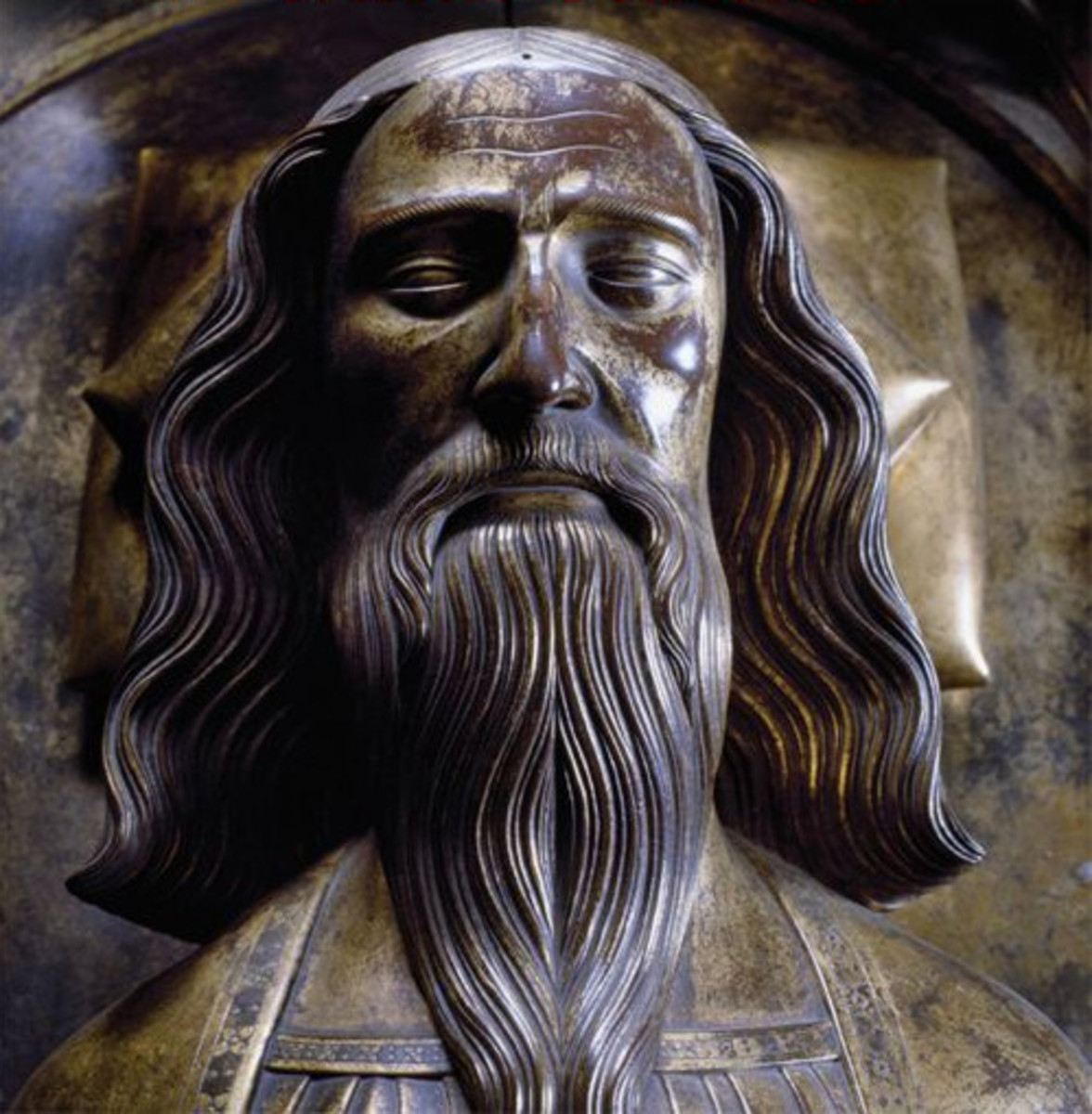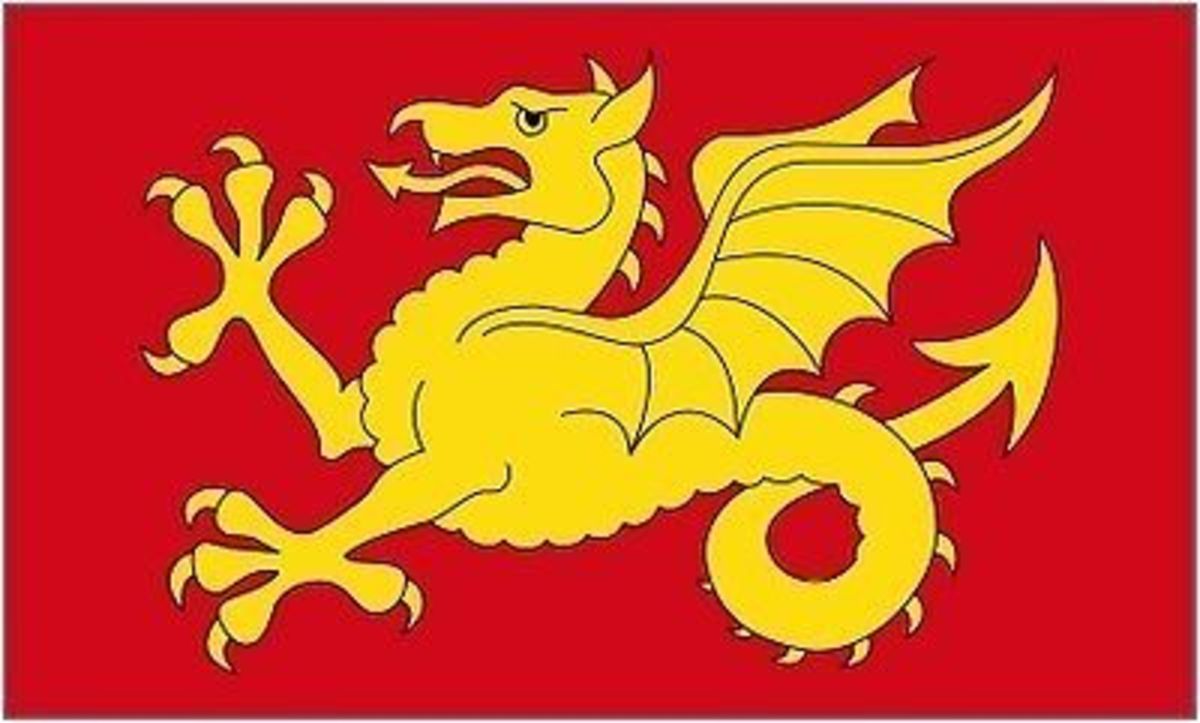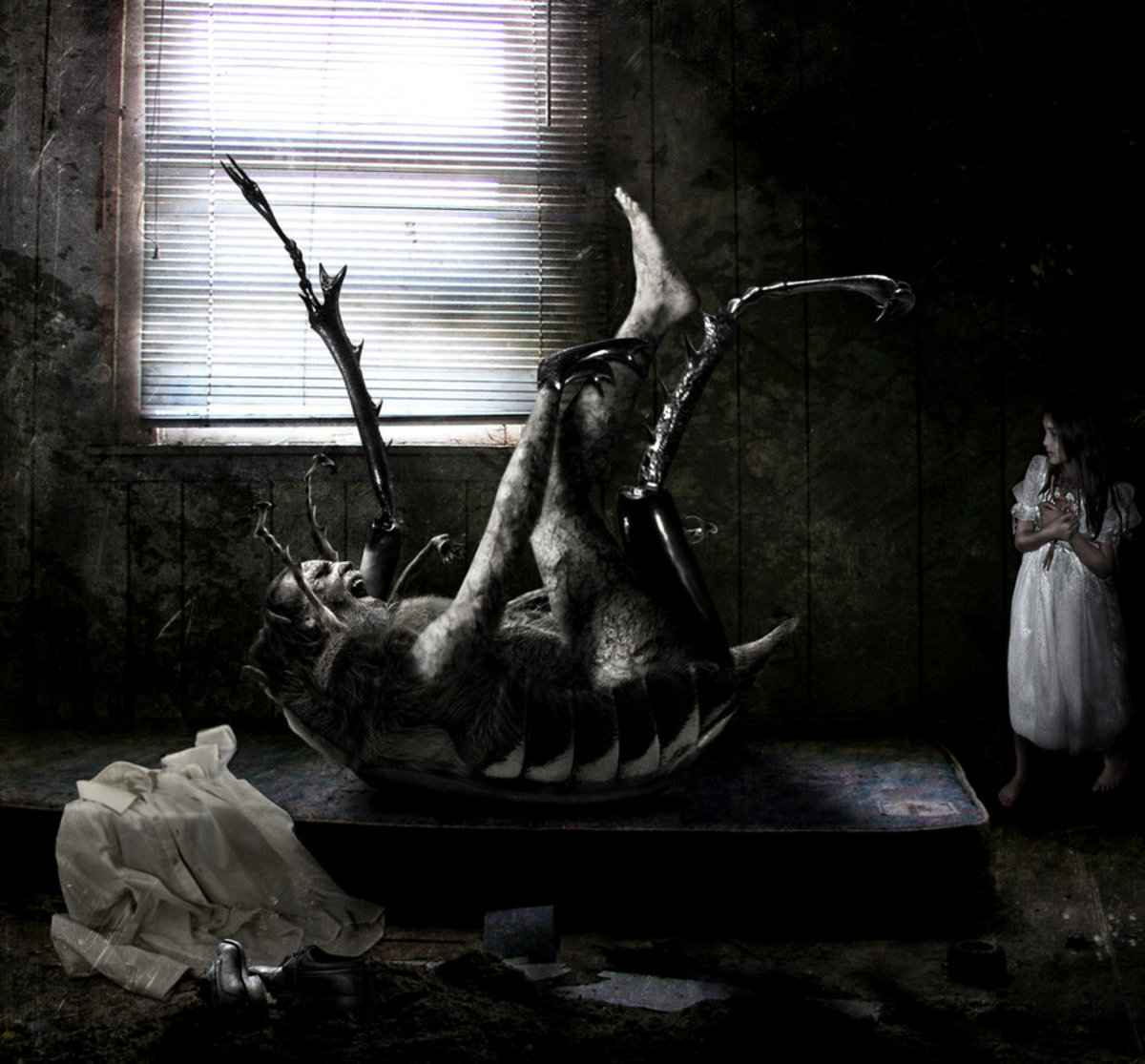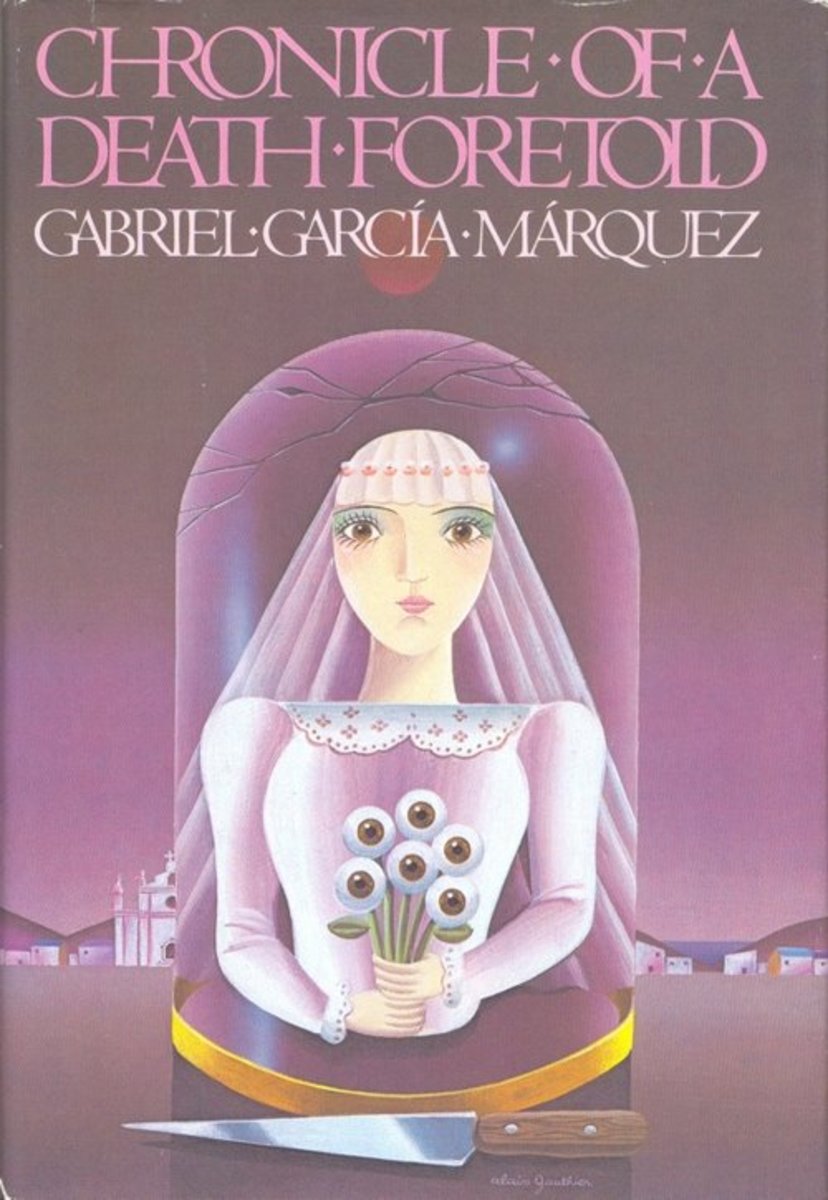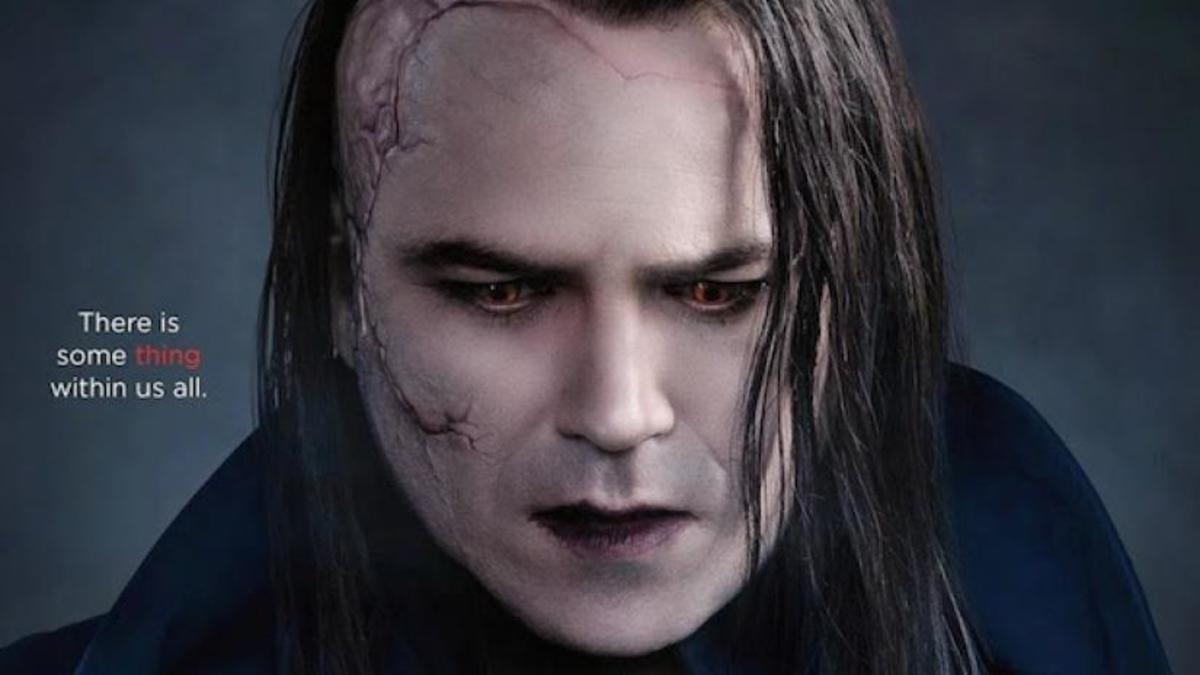Summary of King Lear and Its Major Themes
This play is about true vision.Those characters one would suppose are blind are the ones who see best; and those who have no physical blindness really cannot see a thing.
In ancient Britain, when kingdoms and kings were not uncommon, there ruled for many years a king called King Lear. As he grew older, he realized it was time to divide up his kingdom among his daughters so that they might each rule when he was gone. Pulling out his map of the kingdom, he called all the court to witness. He demanded that each daughter openly declare her love for him, and whoever flattered him most would receive the best part of the kingdom. In his heart he knew he loved his youngest daughter Cordelia best, but his ego could not go without having this display. The elder daughters bestowed their best acts of love upon the old king whom they hardly cared for, in order to obtain the best portion. They flattered, dramatized, and lied. When it was Cordelia’s turn, she was appalled by the untruthfulness of her sisters. She opened her mouth and spoke only the truth: that she loved her father as is fit for any daughter of a kind father. Her love was not more, and not less than she spoke. In a fit of rage, her father expelled her from the kingdom, not to receive any portion of his own kingdom, yet permitting her to marry her suitor, the king of France. The faithful Earl of Kent protested, knowing the king was not wise, but he too was banished from the kingdom.
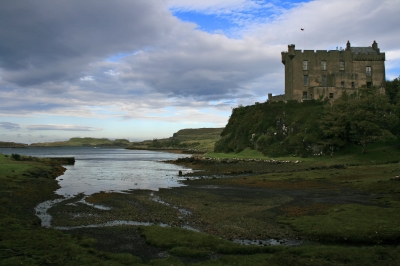
Meanwhile, a sub plot thickens as we meet Edmund and Edgar, two sons of the Earl of Gloucester. Edmund, the earl’s illegitimate son, works to capture the entire kingdom for himself, regardless of the princess sisters’ attempts at winning the kingdom by flattery. Edmund writes a letter warning that another man was working to take the kingdom: putting the blame on noble Edgar, the rightful son of the Earl of Gloucester. His letter accomplished its dirty duty. Seeing his father grow angry and cold at the mere thought of his his true son Edgar, Edmund rushed off to tell his brother that his father was angry enough to kill him. Edgar fled into the hills as his brother had hoped.
The king seems blind to all that is going on, and proves it to us by going on one of his usual hunting trips, and staying for a while as a guest at his eldest daughter Goneril’s castle. But King Lear soon realized that his eldest daughter did not love him and would gladly take away his remaining powers as king. King Lear flew into a blind rage, but the king’s loyal court fool responded to the king’s wrath with a wise comment that King Lear’s wit left him along with the crown he gave away. We cannot abandon all hope yet, though, for the banished Earl of Kent, still loyal and true to the foolish King Lear, pledged his allegiance to the king --under the disguise of a humble stranger-- and asked to be allowed to serve him. The king agreed, and Kent was back serving his master just in time for the king’s greatest hour of need.
The middle sister, Regan, finally joined with her elder sister to get rid of their father entirely, and King Lear was cast out into the furious rain with Kent and the court fool to bemoan his existence and the fate of all who had to “abide the pelting of this pitiless storm.” Searching through the dark, Kent soon found a small cave, and ushered the king inside. This was the very cave where Edgar had found shelter, but he had disguised himself as a lunatic to protect himself from the king’s wrath. Together, the king (whose sanity was quickly leaving him) and Edgar practiced lunatic fantasies in the cave while Kent and the fool looked on.
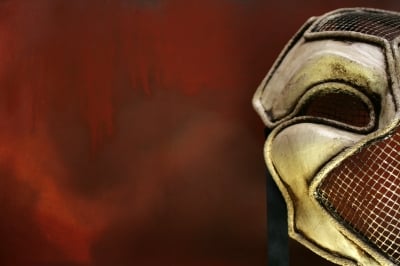
Edgar’s father, Gloucester, realized that the king’s daughters wanted their father dead, so he struggled through the storm to go warn the king. He found the cave, and recommended Kent take the king to Cordelia, not recognizing his eldest son as the filthy madman. Gloucester hurried back to the castle, but was captured by Regan and her husband who had guessed the plans of Gloucester to help the king. Regan’s husband, Cornwall, gouged out both the Earl of Gloucester’s eyes before anyone could stop him. The on-looking servants were horrified, and one ran Cornwall through with a sword. Meanwhile, Gloucester cried out for his younger son to come revenge for him. Regan whispered the truth to him about his younger son’s scheming before thrusting him out of the palace. Outside, blind and helpless, the Earl ran into his true son quite by accident. He did not recognize him, though, but asked the raving lunatic to take him to the cliffs of Dover, that he might jump off the cliff and kill himself. Edgar loved his father still, so he led him to a small hill where, by jumping, he would not die. Gloucester fainted before he hit the ground, and Edgar woke him up --using a disguised voice, swearing that he had seen Gloucester fall, but that he didn’t die. The Earl rejoiced then, thinking that the gods had finally found favor with him. While he was still recovering from his fall, a steward of Goneril, sent out to kill the Earl, suddenly appeared. Edgar defended his blind father and quickly finished off the steward. In his dying breath, the steward told Edgar of some letters he had that should be given to Edmund. Edgar found the letters, and recognized their testimony that his brother was traitorous, and that the two older daughters of the king also were plotting murderous deeds. Now with the evidence in his hand, Edgar could avenge his brother.
King Lear was finally back with his daughter. He regained his sanity, and with it, was no longer blind to the truth. He asked his faithful daughter Cordelia to forgive him, and as a loving daughter, she did. That peace did not last long, as Edmund led the two elder sisters’ armies into battle against Cordelia and her French forces. Sadly, Cordelia lost, and was taken prisoner along with her father. Edmund, now with the hearts of both Goneril and Regan in his hand, had full power over the kingdom. He gave secret orders to his servant to hang Cordelia and King Lear.
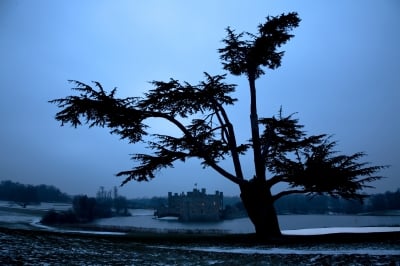
Still wandering the wild hills, Edgar finally revealed his identity to his blind father, who died when heart burst in joy at the realization. Edgar sorrowfully left his father, and went to the castle to challenge his brother. He revealed the letters now in his possession to the Duke of Albany, knowing he would be an ally. Edmund tried to deny the overruling evidence, and dueled it out with his brother. Wicked Edmund received the fatal blow, and then the focus shifts to the two evil sisters who also died that day: the younger of poison from the elder, and the elder from suicide after she knew Edmund was done for. In his dying breath, Edmund revealed that he had sent a servant to kill the king and his daughter.
His confession was too late. Heartbroken Lear held his daughter’s lifeless body in his arms, howling in agony. A few moments later, he also died-- but was now no longer blind to the truth.
If one could judge an author’s philosophical perspective from just one piece of literature, I would say that in this case, Shakespeare knows that life is more than wealth or power. Life is being truthful, sincerely loving, and faithful. Such blameless character qualities could only originate from the heart of God, so it seems the author knows something of the truth about moral goodness.
The drama and excitement of the play is something I liked, and my favorite characters were those who could see truth from the beginning (Cordelia, the court fool, and loyal Kent). The ending arrived in true Shakespearian-tragedy style. All the characters we have loved from the beginning, the ones that we learn to love through their foibles, and the characters we never loved but hated more fiercely as their stories were told, all reached their deaths one way or another. I can’t help but feel that perhaps justice wasn’t done --except for the lingering fact that our dear and truthful Cordelia died a pure and holy martyr’s death, while her evil sisters were killed in pursuit of their own gain.
The story is one of immense tragedy. But its truths are startlingly insightful. Those who seem blind really see best, those who seem fools really are wisest, and those who speak little really know the most. This is the irony also expressed in the Biblical beatitudes: those who are meek, sorrowful, wise, and devoted to the truth, will be elevated to heights of beauty and pathos that no other can attain.
© 2009 Jane Grey

